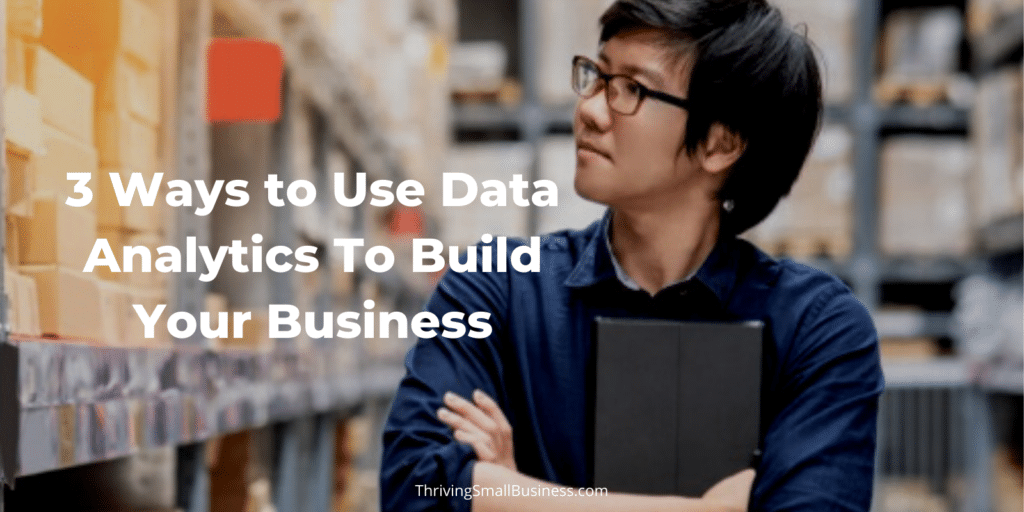3 Ways to Use Data Analytics To Build Your Business
Estimated reading time: 4 minutes
In recent years, it’s become increasingly common for data to be used in every sector to assist business people in cutting costs, creating wares, managing inventory, innovating, streamlining processes, marketing to consumers, and even disrupting whole industries.
While once the “magic” of data was limited to huge corporations because of the cost of getting and analyzing it.
Today even the smallest ventures can, and should, be using data to obtain sales, reduce workload, and increase profits.
Read on for some of the key ways in which you need to take advantage of data to build your business.
3 Ways to Use Data To Build Your Business
1. Know Your Customers
One of the best ways to use analytics is to find out more about your customers.
To generate more sales, after all, you must know what it is potential customers are looking for and how they browse and buy.
You also want to understand your current clients well, so you can be sure to offer them more of the goods or services they really want.
For example, if you sell to other organizations, you must understand things like where they find out about services; which price points they like to buy at; which times of the year they most look to make a purchase; if they prefer to buy online or in person; etc.
To make the most effective use of analytics, learn how to best leverage B2B intent data.

By gaining access to details about what your target market is looking for and when you will be better equipped to offer them what they want at the right time.
The more you know about your customers, the easier it is to segment them and direct specialized marketing to each group.
You’ll be able to effectively design your business processes and strategies in a way that suits your ideal clients.
And, it will be much simpler to choose which marketing avenues to concentrate on, as well as what kind of content to put on your website, ads, social media pages, and other collateral.
Analytics is also helpful when it comes to seeing where and how you acquire clients and how much each conversion costs you in marketing expenses.
2. Provide Better Customer Service
Another key way in which analytics can be used to build a business is via the provision of enhanced customer service.
If you want people to finalize transactions more regularly, to buy more from you more often, and to recommend your business to their contacts, you must keep them happy – providing the right kind of support is vital.
Use analytics to improve the experience you give to consumers at each touch-point where they deal with your company.
Analyze data to work out at what times of the day, week, and year you need more customer service staff on hand to be of assistance.
Also, use data to understand whether people most want help via live chat, emails, social media, phone calls, in-person, or some other format.
Cater to this demand adequately, and you’ll soon increase customer satisfaction.
Take note of the kinds of questions you get asked about your wares or processes, too.
This shows you information that needs to be made more readily available to shoppers, such as through an FAQ page.
You can also use analytics to learn about what kinds of loyalty rewards your customers prefer.
3. Handle Inventory More Effectively
A big expense that causes a lot of stress for many business owners is inventory.
It can often be hard to grow if your cash flow is tied up in stock that isn’t moving.
Happily, though, today you can use analytics to make inventory management more effective.
For example, use data-analyzing programs to create reports about how much stock-on-hand you have of each item, how many goods you have in each category, how much of each product you have sold since you brought it in, when you last sold an item, at what times of year certain goods are most in demand, etc.
With this information, you’ll find out which outdated stock needs to be discounted to move it out, thereby bringing in some cashless and making room for better-selling stock.
Also, use the data to learn about which items sell best and need to be stocked up on in the future.
The information will also help you to see what kinds of goods you should be concentrating on buying in the future.
Once you have more of the items your customers want, you will generate more sales and grow your business as a result.
Building a business can seem daunting if you’re a new entrepreneur, but follow some of the suggestions above and you should soon see sales numbers start to rise.
The more proactive you are, and the more you pay attention to the data available to you, the quicker you will be able to meet your business goals.






